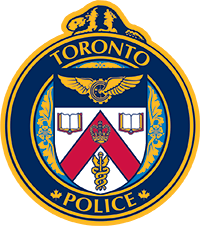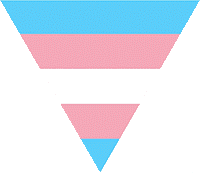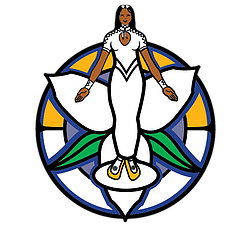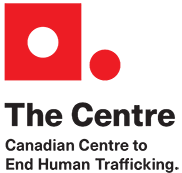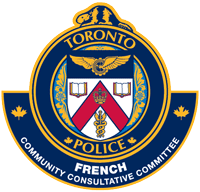Once a person is arrested and charged, they become the Accused.
In most cases, Accused persons are held in custody and brought to court for a Show Cause Bail Hearing. This hearing is before a Justice of the Peace or Judge, with a Crown Attorney representing the Victim, and a lawyer representing the Accused.
The Judge or Justice of the Peace will determine if the Accused is to be released on Bail, or Held in Custody and transported to a Jail.
If an Accused is released, there are usually conditions that will be placed upon them, that they must abide by while out on Bail. These types of conditions include, but are not limited to:
- A No Contact Order – directly, or indirectly with the Victim and other named parties, should they be relevant – this means that the Accused, or anyone else at the request of the Crown, cannot contact the Victim, by any means
- The No Contact order – typically includes that the Accused cannot attend any location that you are known to work, reside or attend.
- If the Accused disobeys any of the conditions placed upon them at the Bail Hearing, contact police immediately as this is a direct violation of their release
- If anyone contacts you and threatens or tries to intimidate you into not testifying notify the police immediately. No one can influence you not to provide testimony. They can be arrested for Obstructing Justice if they do.
The Accused will make numerous court appearances before the matter is set for a Trial. The Victim is not required to attend these court dates. These dates are routine and are for preparation for Trial.
The Victim will have to attend court if there is a Preliminary Hearing or Trial.
Cases are never closed. Should the offender not be caught, the information stays open until further evidence comes to light, or the offender is located and arrested.
The Human Trafficking Team will make every effort to arrest and charge the person(s) who have exploited you into the sex trade.
- Based on the information that you have provided, it is at the discretion of the police to investigate and lay charges where they believe on reasonable grounds that an offence has been committed.
The role of the police is to investigate all allegations of any criminal offence. If there is enough evidence to support the laying of charges, the police are obligated to lay those charges. In cases where no charge is laid, the police should be able to offer an explanation to you as to why. The police may know who is responsible for the crime, but lack the evidence to prove it in court.
If there is not enough evidence to proceed and police cannot lay a charge, the investigating officer can tell you about the civil options that are available to you.
Crown attorneys are the prosecutors in the legal system of Canada. Crown attorneys represent the Crown and act as prosecutor in proceedings.
Ontario has a human trafficking prosecution team composed of specialized Crown attorneys who are responsible for handling human trafficking cases.
This team possesses specialized knowledge to prosecute cases, such as alternatives to in-court testimony (for example, via videoconference or testifying with supports) and can support a victim through the court process.
The court process can be intimidating to many people. The Human Trafficking Enforcement Team has gone to great lengths to provide as much support as possible for you during this time. A Victim Witness Assistance Program (VWAP) member will be assigned to you for the case. They will be there to provide ongoing support while the court process takes place.
The Victim/Witness Assistance Program member will:
- Help you understand what to expect at each court appearance you are required to attend
- Let you know when you are required to come to court
- Provide you with any court related paperwork you need
- Help you complete a Victim Impact Statement
- Coordinate with the Crown Attorney’s Office to have you meet with the Crown Attorney, before you need to testify
The Human Trafficking Enforcement Team will make all arrangements to pick you up and have you transported to court. The team member will stay with you at court and ensure that you are not intimidated or harassed while awaiting your testimony.
You will be brought to a secure location within the courthouse and the team member will remain with you until you are asked to provide testimony. This is to ensure that you feel safe and protected during the court process.
If you need to take a break during your testimony, the team member will remain with you.
The Human Trafficking Enforcement Team and your supports will be in contact with you throughout the whole process. They are a direct contact for any questions, concerns or needs that you may have.
A trial is when a Crown Attorney and the Accused’s lawyer will ask the victim and other witnesses what has occurred. This is all done in front of a Judge. At the end of the Trial, the Judge will review the evidence presented in court and render a finding, the verdict. Reviewing the evidence presented can take some time for the Judge, or Judge and Jury to review.
The Accused can be found Guilty or Not Guilty. These findings are laid out at the end of the trial. If at the end of the trial, the Accused is found to be Not Guilty, which means they are acquitted of the charges and are free to go. This does not mean that you or other witnesses were not believed, it means that not enough evidence was found, beyond a reasonable doubt, to have a finding of guilt.
If the Accused is found guilty, a sentencing hearing will be done on another date. You will not be required to attend on that date, however, you are allowed to, should you want to go.
If the Accused has chosen to plead Not Guilty, you will likely need to provide testimony at the Preliminary Hearing and Trial.
The Human Trafficking Enforcement Team and your support team will meet with you and the Crown attorney assigned to your case prior to you having to testify in court. The Crown Attorney will prepare you for what to expect in court and will answer any questions you may have.
Sometime before the trial, the Crown will ensure that you are provided with a copy of your statement, which will help refresh your memory (often the trial can be a long time after the offence). You may be asked to read your statement over a number of times to ensure that the answers you provide in court match the answers given in your statement.
The Crown will also show you the court room prior to the trial date so that you can see where the trial will take place.
If you are expressing concerns about seeing your trafficker in the court room and you feel that seeing him/her will affect your testimony the Crown can make an application so that you can testify in another room via CCTV (video). Most of the victims in Human Trafficking cases choose this method of testifying as they have expressed a great deal of fear and anxiety about seeing their trafficker in court. The Crown will make every effort to protect your rights and dignity, which will assist you in providing your testimony.
The website www.courtprep.ca can also provide you with some information on the Canadian Justice process and shows you an animated courtroom.
The team members from the Human Trafficking Enforcement Team who transported you to court will bring you immediately to a private room in the courthouse. You will stay in the room until you are needed to testify. If you want to leave and go outside the officers will walk with you. This is to ensure that you feel safe at all times during the court process. If the Accused or any of associates of the Accused attempt to threaten or communicate with you the officers will respond and further criminal charges may be laid.
If the Accused is in custody, he or she will usually sit in a transparent enclosure, which is guarded by court officers. If the Accused is not in custody, he or she may sit in the courtroom beside his or her lawyer.
If the Accused has been released on bail, he or she may be sitting beside their lawyer or in the public seating area of the courtroom.
Although there are no set rules on what to wear to court, there are some general rules of the court regarding attire. If you are wearing a hat, for example, you will be asked to take it off. Other rules of courtroom etiquette, such as not talking while court is in session and turning cell phones off, will also be enforced.
Victims of crime should be treated with courtesy, candour, respect and dignity. The rights of victims to information, protection, participation and restitution are recognized by the Canadian Victims Bill of Rights and the Ontario Victims’ Bill of Rights.
Prosecutors must display sensitivity, fairness and compassion in their dealings with victims. Victims have the right to convey their views about decisions to be made that affect their rights under the Canadian Victims Bill of Rights and to have those views considered.
However, other compelling public interest factors will be balanced against the victim’s wishes. For example, if the Accused poses a risk to the public or if there is a concern that the victim is being intimidated or pressured not to proceed.
All of these factors will be considered in deciding whether to proceed with a case. The Crown Attorney will make the final decision to proceed with the case.
If the Accused is found guilty or pleads guilty to the charges, the Crown Attorney will ask you to complete a Victim Impact Statement. This document is your opportunity to say how the situation has affected you, your life, both emotionally and physically.
The Judge will consider your Victim Impact Statement when they are imposing a sentence
It is your choice to complete the Victim Impact Statement. You are not required to do so. However, it is very important for the Judge to see exactly how you and your life has been affected.
If you do complete the Statement, the Judge is required to consider all your information before imposing sentencing.
There are numerous types of sentences that can be ordered.
Incarceration
- offender is sent to jail.
- The Criminal Code sets out the maximum term of imprisonment available for each criminal offence as well as minimum sentences for some offences. The Judge decides what the appropriate sentence is in each individual case.
- A No Contact order can also be added so the offender cannot contact the Victim while in jail.
- If the Sentence is less than 2 years, the offender is sent to a Provincial Jail and may also be given a Probation Order that they have to comply with following their release from Jail.
- If the Sentence is 2 years or more, the offender is sent to a Federal Prison and will be subject to Parole Supervision if released into the community on parole before the end of their sentence.
- There are Minimum, Medium and Maximum-security prisons.
Intermittent Sentence
- Only available if a Judge imposes a sentence of 90 days or less.
- The offender reports to jail on Friday evenings and stays in jail until Sunday evening. This happens again on subsequent consecutive weekends until the offender serves the entire sentence.
- This sentence allows the offender to go to work, school or manage any Health issues.
- This sentence is always accompanied by a Probation Order that the offender must comply with when not in jail.
Conditional Sentence
- Available where the sentence imposed is less than 2 years, there is no minimum sentence for the offence, it is not one of the offences listed in the Criminal Code which is prohibited from being eligible for a conditional sentence (e.g. human trafficking) and the court is satisfied that serving the sentence in the community would not endanger the safety of the community and would be consistent with the fundamental purposes and principles of sentencing.
- The jail sentence is served in the community (i.e. at home) while under the supervision of a probation officer and subject to conditions such as house arrest. A probation order can also follow a conditional sentence, lengthening the amount of time the offender is required to abide by conditions and is under the supervision of a probation officer. If an offender breaches the terms of a conditional sentence order, he can be re-arrested for the breach and after a Breach of Conditional Sentence hearing a Judge can either order that the offender serve the rest of the conditional sentence in a jail or allow the offender to continue serving the rest of the conditional sentence at home.
Suspended Sentence with Probation
- A Judge may choose to delay or "Suspend" the passing of sentence on the offender for a specific period of time. If the Accused does not commit any new criminal offences during the time period that the sentence is suspended, no further sentence can be imposed for the original offence. However, if the offender does commit new criminal offences during the time period of the suspended sentence, the offender can be brought before the original sentencing Judge who can impose any available sentence for the original offence which resulted in the suspended sentence. Suspended sentences are always accompanied by a Probation Order, which requires the offender to abide by certain conditions set by the Judge.
- The offender does not serve any jail time but is under the supervision of a Probation Officer
Orders a Judge can make at the Sentencing stage, depending on the circumstances of the case: DNA order, SOIRA Order, Firearms Prohibition and Forfeiture Order:
Probation
- When offenders are supervised in the community after they have served a jail sentence of less than two years or in addition to certain types of sentences (such as a conditional discharge, fine or suspended sentence).
- They are supervised by a Probation Officer for a period of up to three years.
- The offender usually has conditions to follow that are listed on the Probation Order which can include: No drugs or alcohol, staying away from areas, places or people, attend treatment or counselling if the offender agrees, seek or maintain employment, not to possess any weapon.
- If the offender violates any of the conditions placed upon them, they may be arrested and charges with a new offence of Breach of Probation.
Appeals
- The Accused can ask for an Appeal to a higher court of a guilty verdict at the end of a trial, as well as an appeal of the sentence imposed where an Accused is found guilty after a trial or pleads guilty.
- The Crown Attorney, in certain circumstances, can ask for an Appeal to a higher court of a not guilty verdict at the end of a trial, as well as an appeal of the sentence imposed where an Accused is found guilty or pleads guilty.
- The Appeal must be filed done within 30 days of sentencing.
- The Appeal Court can either allow the appeal or dismiss the appeal. If the verdict is being appealed by either the Accused or the Crown, a new trial could be ordered by the Appeal Court.
- You will only be required to testify again if the Appeal Court higher Judge orders a new trial.
Plea bargaining occurs when the Crown and the defence come to an agreement wherein the Accused pleads guilty. The guilty plea usually comes in exchange for a benefit such as reducing the charge against the Accused or where the two sides agree upon a sentence.
If a plea bargain occurs in your case, it does not mean that the offence is less serious or that the Crown doesn’t believe you. It is commonly used to save both time and money, as the court system could not handle the volume of cases that come before it without the plea bargaining system. Since Crowns have a good idea of the type of sentence that a Judge is likely to impose for a particular crime, if they can get the Accused to agree to a term close to this, they may not see the benefit of a trial.
The Crown MUST confer with victims of crime before proceeding with a plea bargain. A Judge will ask during the plea/sentencing if the Crown Attorney has informed the victim of the proposed sentence, and ask if he/she wants to provide any input. Victims appreciate being informed of happenings in their case and are more likely to accept a plea bargain when the reasons behind it have been explained.
Plea bargains also occur when an accused wishes to take responsibility for the crime, to demonstrate remorse, in efforts to hopefully receive mitigation at sentencing.
It is also important to note that Crowns do not require a victim’s permission before proceeding with a plea. A plea bargain can be made at any time including, up to, and during the trial.
It is often difficult for victims to understand why the Crown would plead down charges against the Accused, especially when the case seems so strong. Speak to the Crown and have them explain the reasons for doing so. Ultimately, it is the Judge who has the final discretion in accepting or rejecting a plea.
Regardless of the fact that a plea bargain has been entered, you still have the right to submit a Victim Impact Statement.
Most offenders do not serve their full sentence in jail. In most cases, the offender will be released from jail on Parole after serving part of the sentence. You can request to be notified of the offender’s release or Parole Hearing.
If the offender is serving a sentence in a Provincial Jail you can register with the Victim Notification System by calling 1-888-579-2888
Choose the option for Victim Notification Service.
If the offender is serving a sentence in a Federal Prison, you can register with the National Parole Board by calling 1-800-518-8817
Parole is a conditional release from a jail before the offender has served the entire sentence imposed, which permits the offender to serve the rest of his/her sentence in the community under the supervision of a probation and parole officer (if the sentence was served in a provincial jail) or a parole officer (if the sentence was served in a federal penitentiary).
In Ontario, the release of offenders from jail before the end of their sentence is the responsibility of the Ontario Parole Board. The Parole Board of Canada is responsible for the early release of offenders who receive prison sentences of two years or more.
A Parole Board will decide, based on their governing legislation, whether or not to approve the offender’s application for Parole. Some of the factors they consider are the offender’s behaviour in jail and whether s/he has completed programing or treatment.
Most offenders who are serving a penitentiary sentence of two years or more can apply for early release from prison to The Parole Board of Canada after serving 1/3 of their sentence, or after 7 years, whichever comes first. If the offender is denied Parole, they can reapply after 2 years. If Parole is approved, the offender will be released from prison, and serve the remainder of their sentence in the community, under specific conditions and under the supervision of a Parole Officer. If the offender violates the conditions while on Parole, it can be revoked and the offender is sent back to prison. In some instances, the Judge can order that the offender is not allowed to apply for full Parole until they have served one half of the sentence or ten years, whichever is less. If this is the case, it will be stated at the time of sentencing.
The Canadian Victim Bill of Rights is a set of principles that guides how Victims of crime should be treated at different stages of the Criminal Justice process.
A Victim, according to the Act, is defined as an individual who has suffered physical or emotional harm, property damage or economic loss as the result of a crime.
The Canadian Victim Bill of Rights provides the following statutory rights for Victims of Crime;
- Right to Information
- Right to Participation
- Right to Protection
- Right to Restitution
Every victim has the right to present a victim impact statement to the sentencing Judge before the Judge decides what sentence to impose on the offender. When a victim impact statement is filed in court, the Judge must consider it when determining what sentence to impose. The victim impact statement is the means by which the Judge learns about the physical and emotional harm, property damage, or economic loss suffered by the victim as a result of the crime and the impact of the crime on the victim. In Ontario, Victim Witness Assistance Program workers can assist victims of crime with completing Victim Impact Statements. The victim impact statement can be filed on paper only, or read in court by the victim or by the Crown, or read by the victim from outside the courtroom through closed circuit television so that the victim does not have to see the offender.
For more information on the Canadian Victim Bill of Rights you can go to: https://www.canada.ca/en/services/policing/victims.html
As a Survivor of Human Trafficking, you are eligible to be financially compensated.
The Canadian Victims Bill of Rights (2015) provides victims with a right to ask the court to consider restitution if the offender is convicted. If ordered, the offender’s sentence may include restitution, requiring the offender pay an amount directly to the victim of the offence to help cover monetary losses or damage to property caused by the crime.
When a trafficker uses coercion or fraud to obtain credit in the victim's name, coerced debt is created. In coercive debt situations, for example, a victim may be threatened, forced, or tricked into renting cars, paying for hotels, gas, food, and rent, among other things.
The victim may also be forced to take out personal loans, student loans, open credit lines, or apply for certain social benefits, which are then turned over to the trafficker.
Project Recover
Project Recover offers free support, guidance, advice and advocacy to Survivors of human trafficking who are dealing with the negative impact of coerced debt on their credit profile. To date, Project Recover has had a 100% success rate in advocating on behalf of Survivors of sex trafficking. Project Recover also offers a number of practical resources for survivors and social service providers, and a toolkit about human trafficking for Canadian lenders
For more information please visit:
https://projectrecover.ca or,
call the Canadian Human Trafficking Hotline at 1-833-900-1010

